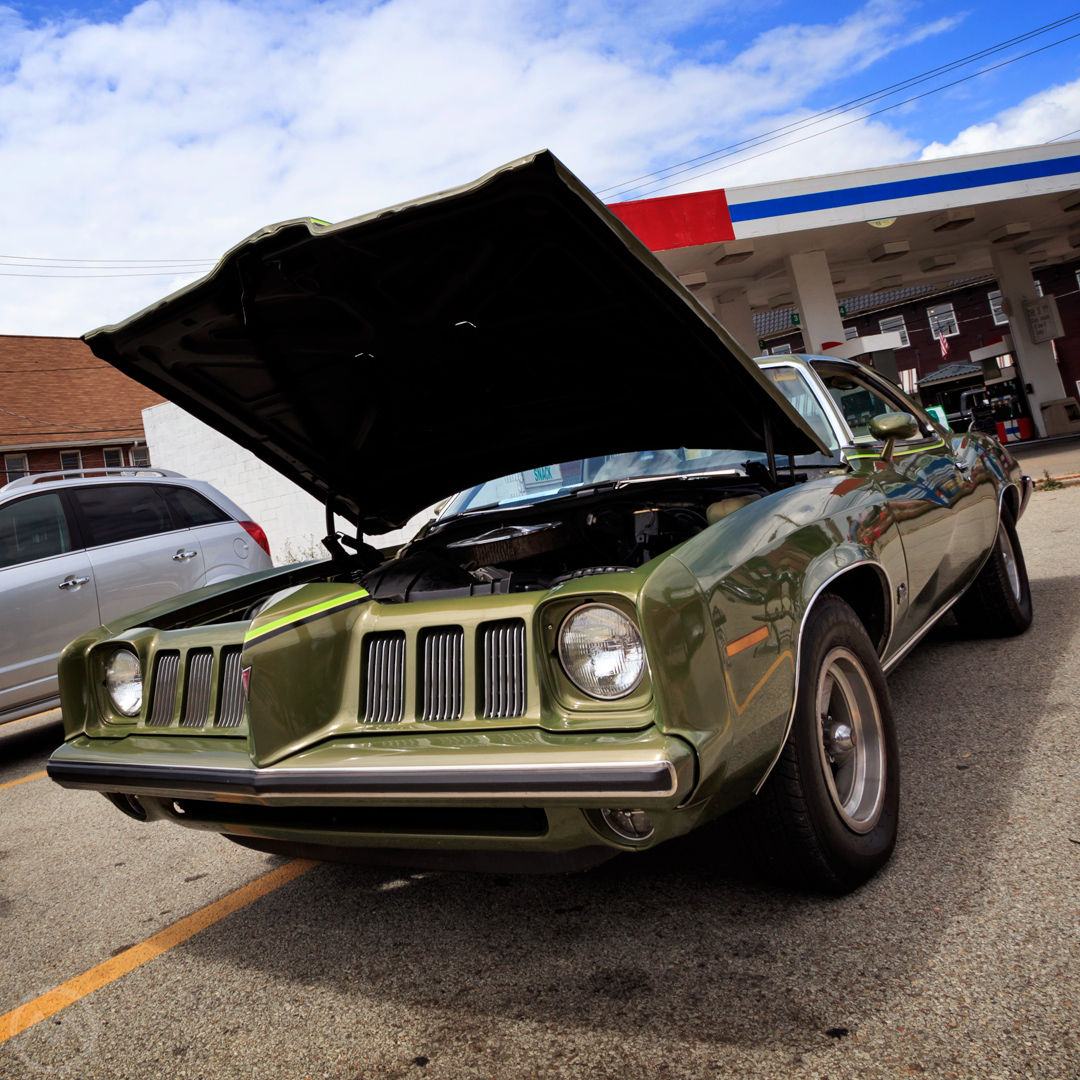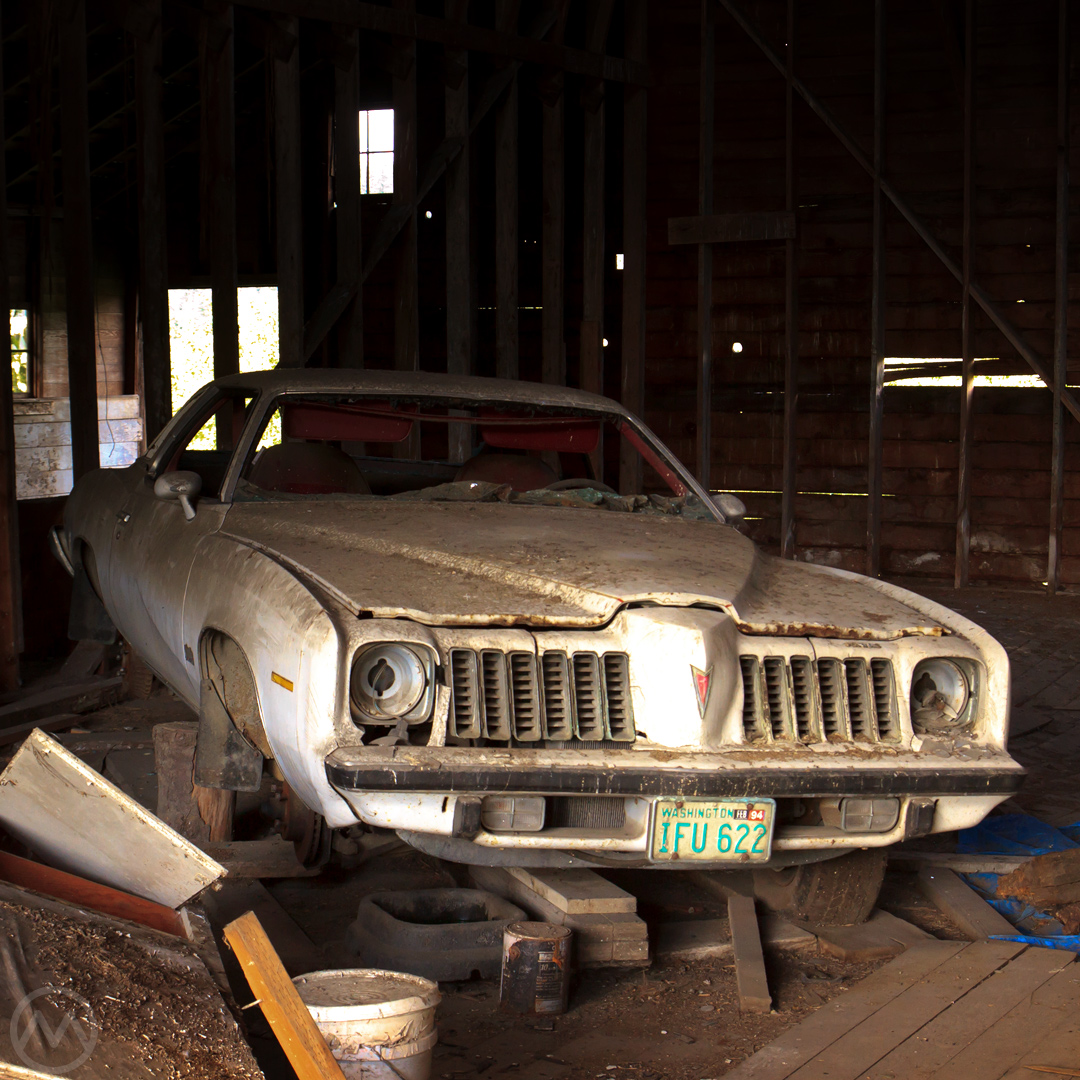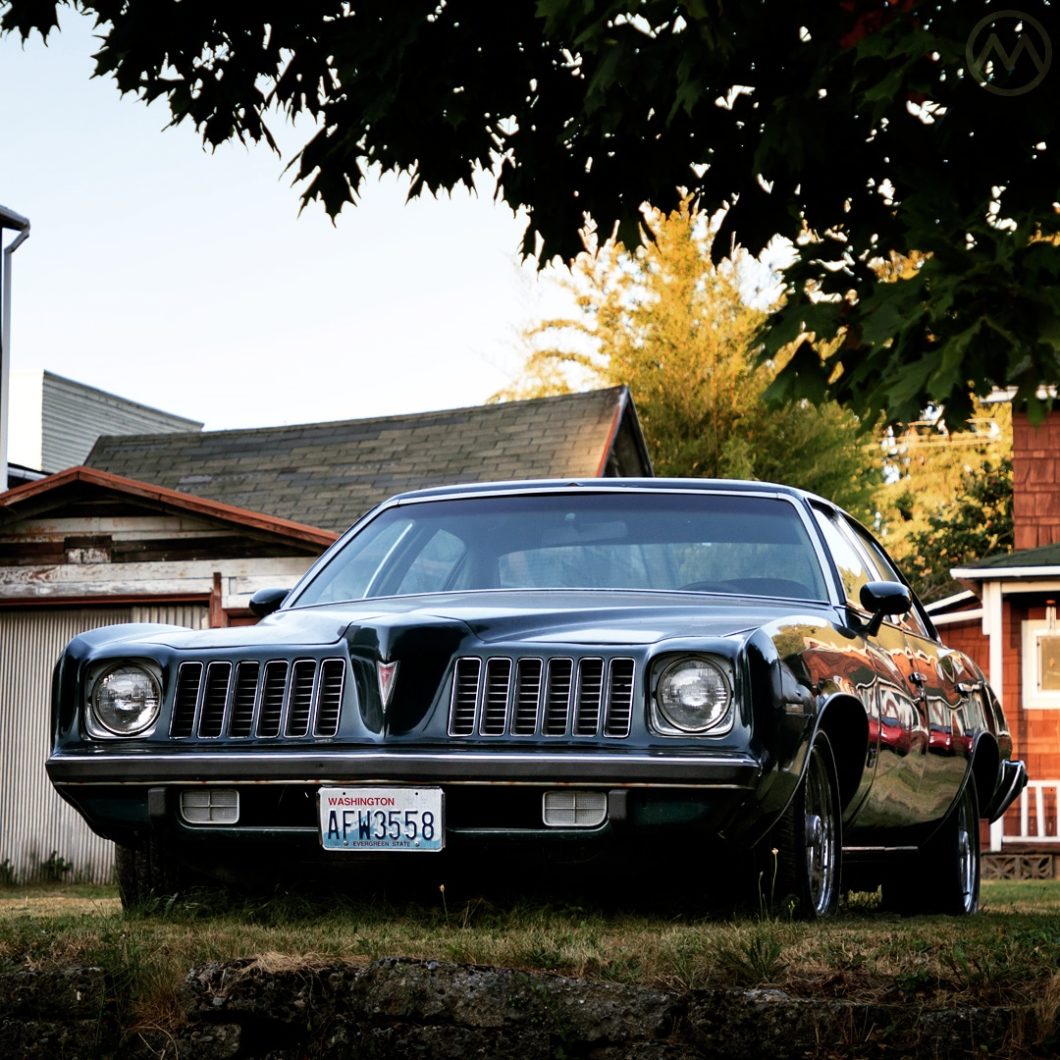Years later, reincarnated as a small front-driver riding GM’s N-body platform, the Pontiac Grand Am would become the excitement division’s best-selling car.
The original Grand Am, sometimes forgotten in the wake of that success, got the exact opposite of that reaction. A box office bomb, it lasted just three seasons from 1973 to 1975, but its lack of success was primarily down to timing and market forces. The actual vehicle was one of GM’s best and most interesting cars of the 1970s.
That first Grand Am was a very different car than what came later – an attempt to reinvent Pontiac’s 1960s hot car formula and infuse it with some of the attributes of European sedans like the BMW E3 and Rover P6, although the direct inspiration came from BMW.
The first Grand Am’s story has two beginnings, one having to do with how the car would feel and the other having to do with how it looked.
The plan for the “feel” of the Grand Am started when Pontiac engineer turned product planner Bill Collins borrowed a BMW 3.0S while on a business trip to Opel’s headquarters in Russelsheim, Germany.
Collins, an an acolyte of John DeLorean who would later join him at DMC, believed that American cars could and should handle just as well as European ones. With Americans increasingly noticing cars like that (they were still very niche in 1970), Collins believed that this should be an integral part of “Pontiac Performance.”
The wheels were already in motion for the new car, however, as Pontiac looked for ways to bring the GTO into it’s next generation – the “Colonnades” planned for 1972.
Plastic Fantastic
The styling of what became the Grand Am was to have been the 1972 GTO’s look. The centerpiece of the updated “Goat” would have been a new version of the plastic “Endura” nose first seen in 1968. Everyone loved the clean look of the Endura, which paved the way for modern plastic fascias, and it gave the GTO a “bumperless” look like a race car.
In seeking to update the look for 1972’s new cars, Pontiac’s then studio chief Bill Porter and his design team had to create something which preserved the Endura look but also mated up easily with the forthcoming LeMans, which was a more ornate car than the outgoing circa-1968 model and one with an even more prominent pointed nose.
The team, which included Charley Gatewood, Ted Schoeder, Geza Loczi, and Dennis Barnes, and Porter’s number 2 man Wayne Vieira, repeatedly brianstormed together on just how to do this until Gatewood sketched out a swept-back “catwalk” front clip that melded the Endura with the big prow in an elegant way.
The sweeping look accentuated the nose and the sharp fender caps and set most of the plastic pieces a few inches back of the bumper.
Porter and Vieira liked the look, and had Gatewood work up a full-size rendering. A few days later, GM’s design boss Bill Mitchell walked into the studio and, according to Vieira, exclaimed “Jeeeeezus Christ!” The rendering became a commotion and quickly got the go-ahead.
At this stage, the car was meant to be the 1972 GTO. The plastics used would be improved from the early Enduras and hopefully more resistant to cracking over time. Both the early Endura plastic and the paint on top of it often suffered from premature wear.

The only problem was that GM’s production teams didn’t have enough time to really sort out the new material before their internal deadlines. A series of strikes starting in 1970 and culminating in the 174-day 1972 Norwood labor action delayed the Colonnade cars into model year 1973. That gave the engineers time to get the materials right for the plastic pieces.
By then, however, the car was no longer going to be the new GTO. There would still be a GTO, but there would now be something else slotting next to it – the Grand Am.
The Euro Grand Am
Around the time of Collins’ European trip, it was plain that interest in muscle cars was fading.
After 1968, the sales trends were steadily downward, a combination of insurance rates, increasing costs, and reduced power after emissions regulations started to bite in 1970. Many buyers were defecting to more luxurious cars too. The GTO “Judge” was long the top prize among collectors of late 1960s Pontiacs, but the Grand Prix was the biggest blockbuster of 1969-70 for the division, not the “Judge.”
Pontiac’s entire brand image was built on speed, but speed might look different in 1973 than it had five years earlier, so Collins set about creating something ideally meant to have the power and style of a traditional Pontiac blended with the handling and feel of the BMW and cars like it – think Triumph 2500S or Rover P6 at that time.
John Seaton, Pontiac’s chassis engineer, and his team started with Pontiac’s “Radial Tuned Suspension,” heavy duty bushings, thick front and rear anti-roll bars, unique shocks and suspension tuning with a little more travel to counteract the firmness, and standard Radials on Pontiac’s polycast wheels. The cars also got standard front discs and a quicker steering ratio for more direct responses.
After focusing on building this new product, the project was briefly called “Europa” before the Grand Am name was chosen. It evoked the Can Am racing series while preserving Pontiac’s “Grand” theme – at the time it also sold a Grand LeMans, Grand Prix, and Grand Ville.
Inside, the car used the Grand Prix’s interior with some modifications. All were “Buckets and console” cars, Detroit code for “sporty” in the sixties but something mostly superficial by the seventies.
Like the GTO, the Grand Am could not fundamentally depart from the volume-selling LeMans for production reasons, but the mixture was one which created an excellent handler for a big Detroit car and on which had plenty of potency even in emissions-choked 1973 – V8s were standard, and you could get up to a 250-horse 455, though the SD-455 was not available (though the product team did talk about it).
Bad Timing
The cars arrived late in 1972, and the Grand Am immediately got good reviews for both its styling – which eschewed the big heavy chrome bumpers that had come to many cars that year, and for its handling and speed. It rode like a regular family car but handled like a Firebird and came with lots of standard equipment. How could you go wrong?
Well, it also cost $1,000 more than a comparable LeMans which, behind the B-pillar, looked largely the same. 1973’s sales were actually fairly decent, but at the end of the model year OPEC struck.
No matter how “Euro” it felt to drive, the Grand Am was still a big American car that got 11 mpg, and it was a performance car rather close to the mold of the floundering GTO (now an option package on the LeMans Sport coupe, just 4,800 were made in 1973). The experiment was essentially crushed by the impact of OPEC.
Originally, there was supposed to have been a full line – coupe, sedan, and wagon – but the wagon plant in Massachusetts did not want the hassle of one more variation of wagon, so that idea never got beyond the prototype stage.
Ideally, the Sedan would have been the car to lead Pontiac’s “sports sedan” efforts, but “sports sedans” were a foreign concept in 1973-74, and four-door muscle cars a contradiction in terms to buyers back then, so most were coupes.

Pontiac’s second studio, led by designer John Schinella, face lifted the front and rear of the Grand Am for 1974, but sales were terrible – just over 17,000 for the year, including only 3,122 sedans like the one seen at the top of the page. With rectangular headlights coming for 1976, no plans were made to update the Grand Am for that year – and the model just ran out the clock in 1975 with almost no changes.
There were two epilogues to the original Grand Am story. First, in 1977, came the Pontiac Can Am, which showcased some pieces first seen on a 1974 Grand Am concept car, the “All American.” Some of these pieces might have been destined for an updated 1976 Grand Am had that idea been approved, and they were built on a limited basis as the ‘77 Can Am.
The Grand Am name returned in 1978 on the next generation of LeMans, a downsized A-body. It too had some suspension and style tweaks, but even less differentiation than the original. Like the first Grand Am, it bombed, and was dropped after 1980.
When Pontiac revived the name in 1984 for its new, small N-body compact many dealers were skeptical given the reception the first two Grand Ams had gotten, but their misgivings were short-lived. The N-body Grand Am was completely unlike the first two and exactly in line with what buyers wanted at the time.

